The boat left port long before I got out of bed. When my eyes finally opened, I looked out our cabin’s window and saw this:
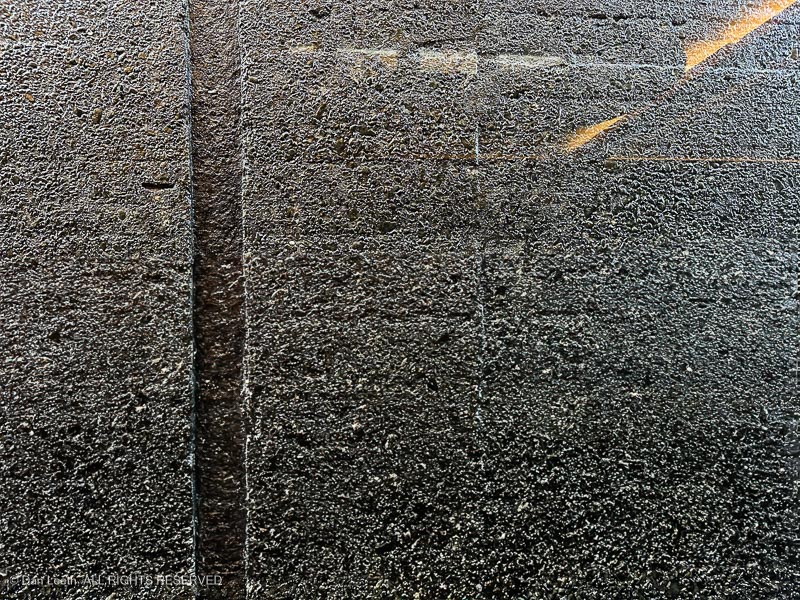
We were inside the Bagauste Lock, the third of five dams on the Douro River. The next set of locks would come three hours later when we reached Valeira Dam…
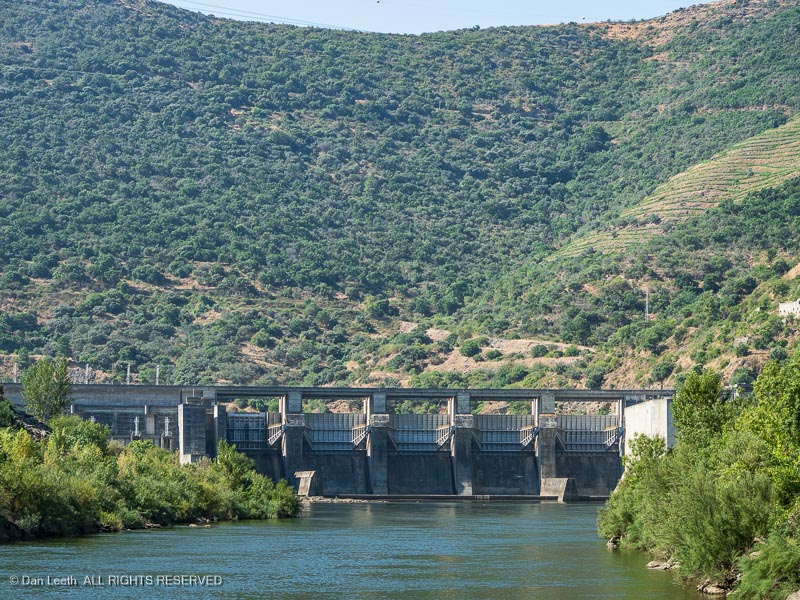
Here we had to wait for a downstream river cruise boat to clear the locks before our vessel could enter. Our relatively tiny river cruise boat pretty much filled the lock. Looking at the size of some of the other vessels, I wondered how they could possibly squeeze in.
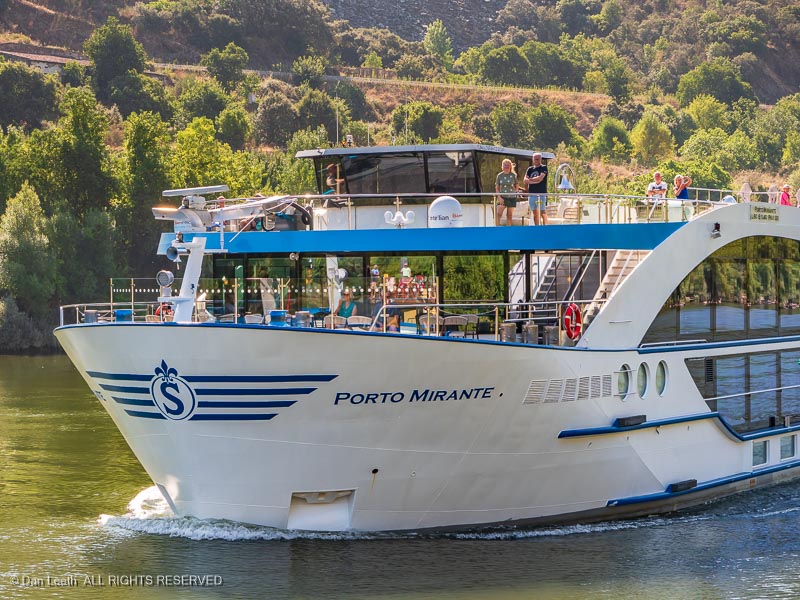
Clearing the lock…

I remained on the sundeck and spent a glorious morning watching as we bypassed hillsides terraced with the vineyards…
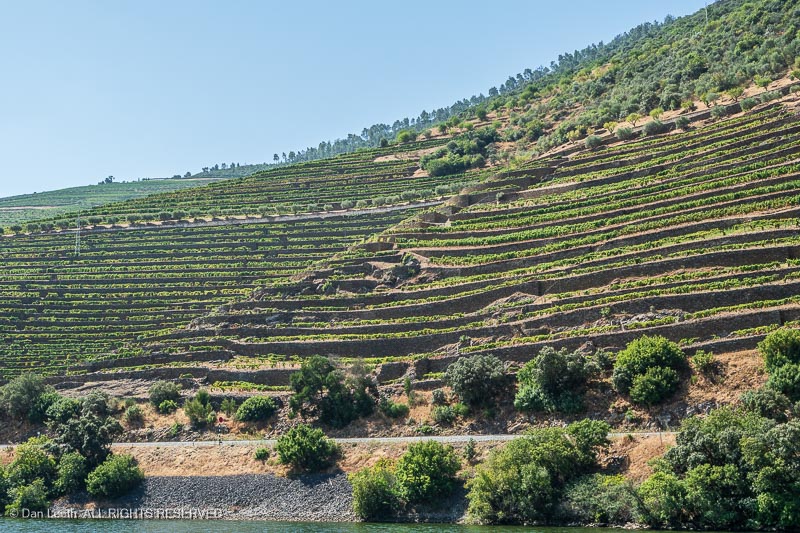
…where the grapes for prime port and other Douro region wines are grown.
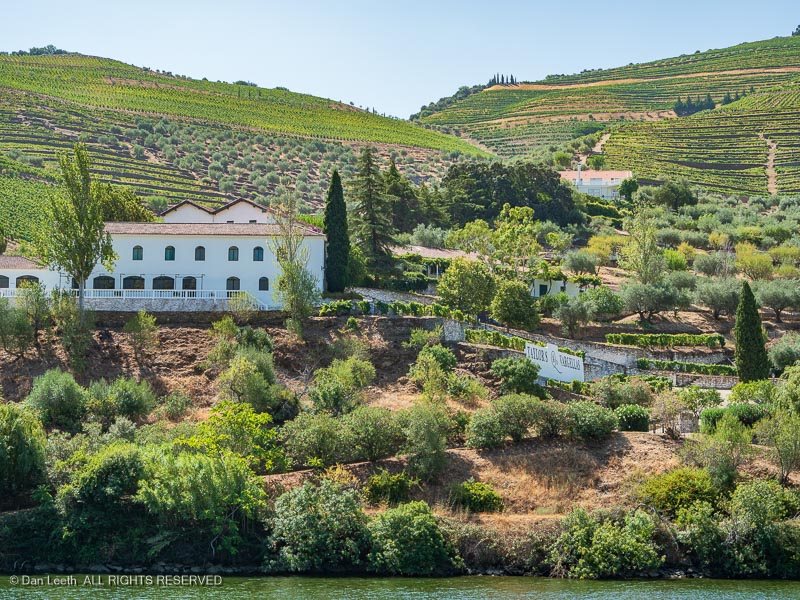
Railroad tracks follow the river. Unlike most European trains, which are electrically powered, trains here are pulled by diesel locomotives.
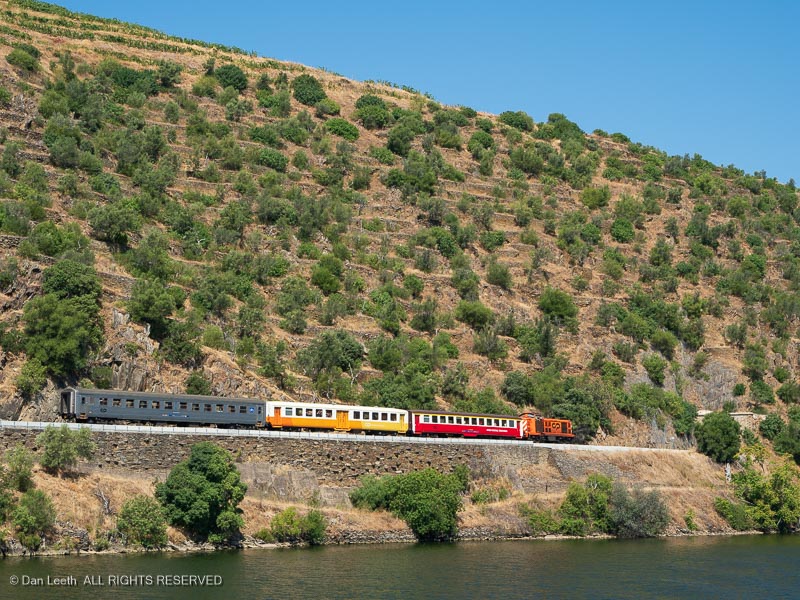
Passing all these sprawling vineyards made me want to indulge in an extra glass of wine at lunch. And why not? Cruises are escapes where we expect to be pampered, and all that beer and wine at mealtime is included in the price.
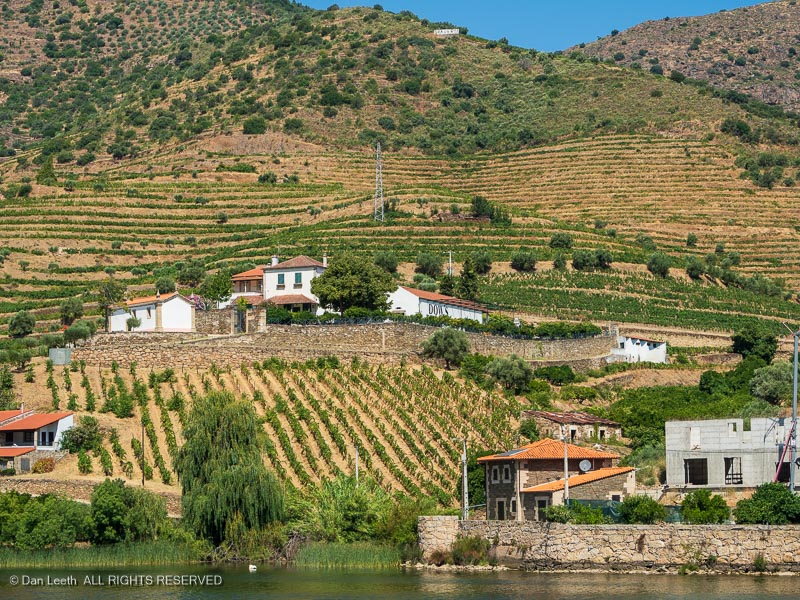
After lunch, the boat docked at the Pocinho Pier. Instead of continuing upstream on the boat, we would take a bus (same driver, same guide) on an overland journey to the medieval fortress village of Castelo Rodrigo. We would eventually return to the boat upstream near the Spanish border.
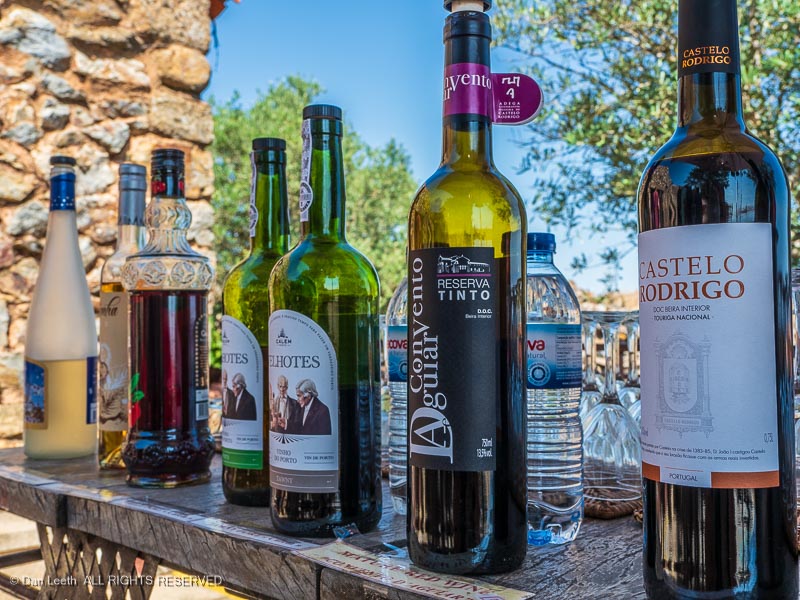
Arriving in Castelo Rodrigo, we immediately sampled some of the local wines…
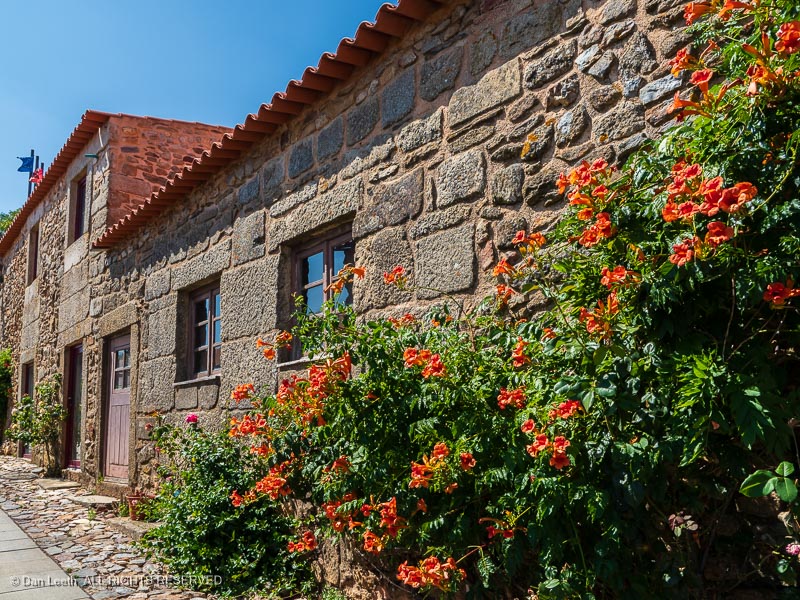
…and then were turned loose to explore on our own.
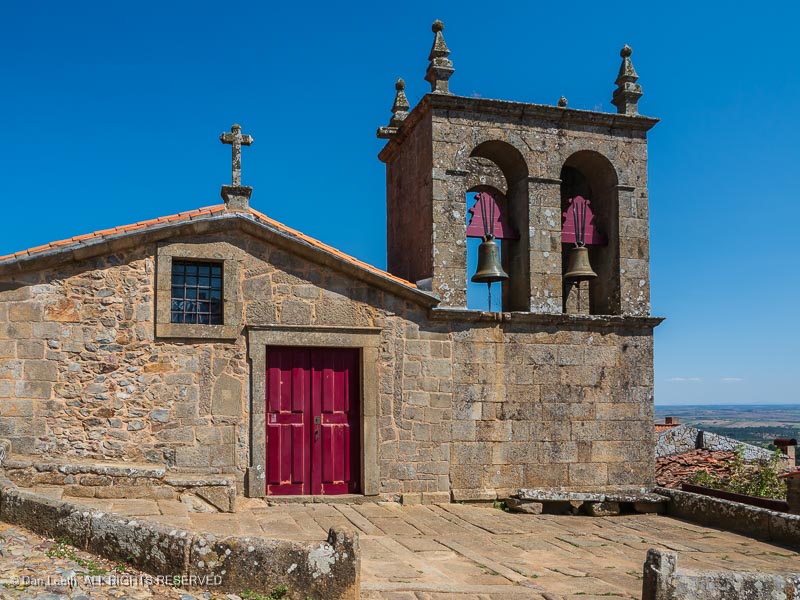
Cobblestone streets took us past the parish church.
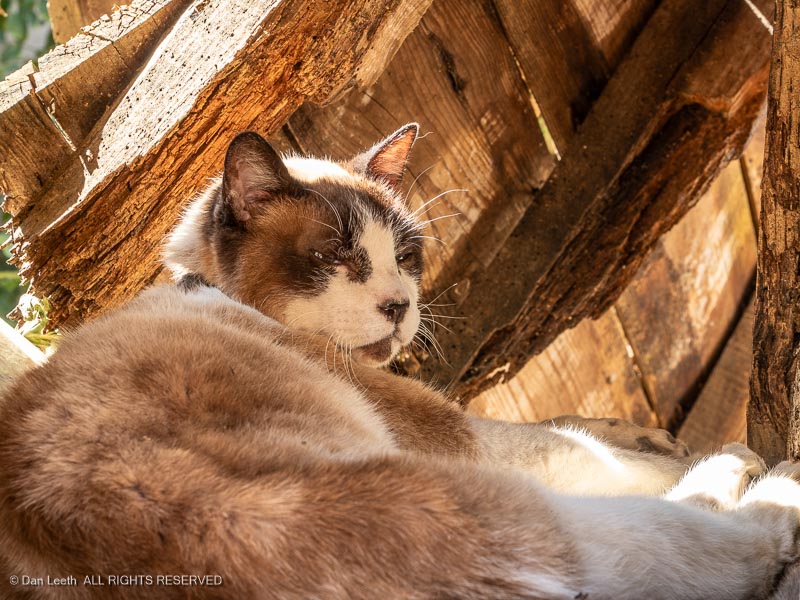
We admired the local wildlife…
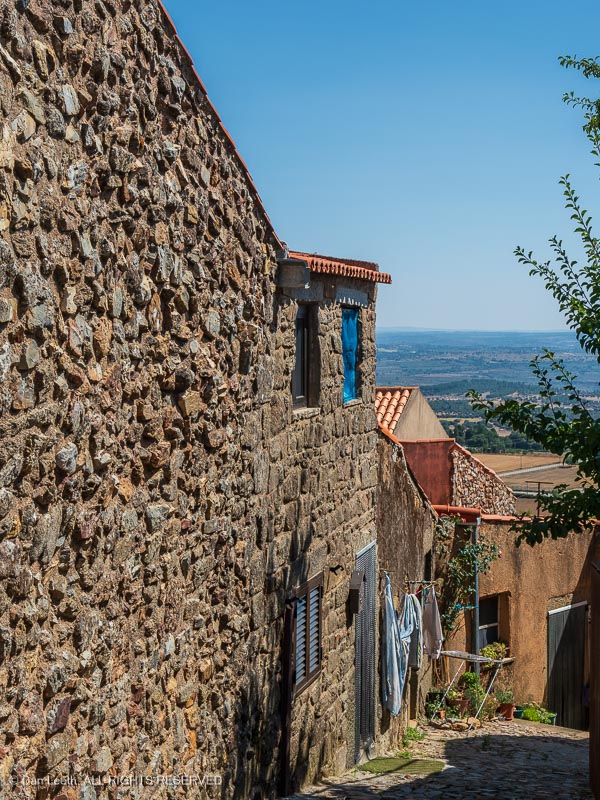
…and ventured down narrow streets where local residents used the latest solar technology to dry their laundry.
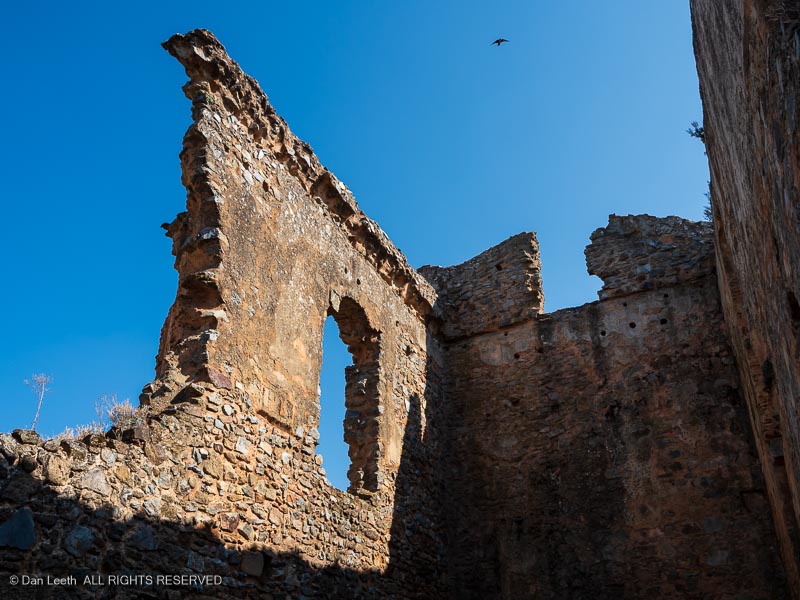
At the top of this hilltop village, we visited the remains of the Cristóvão de Moura Palace, which was built in 1590.

I love old structures, and for me, the few hours we spent in Castelo Rodrigo provided one of the highlights of the trip.
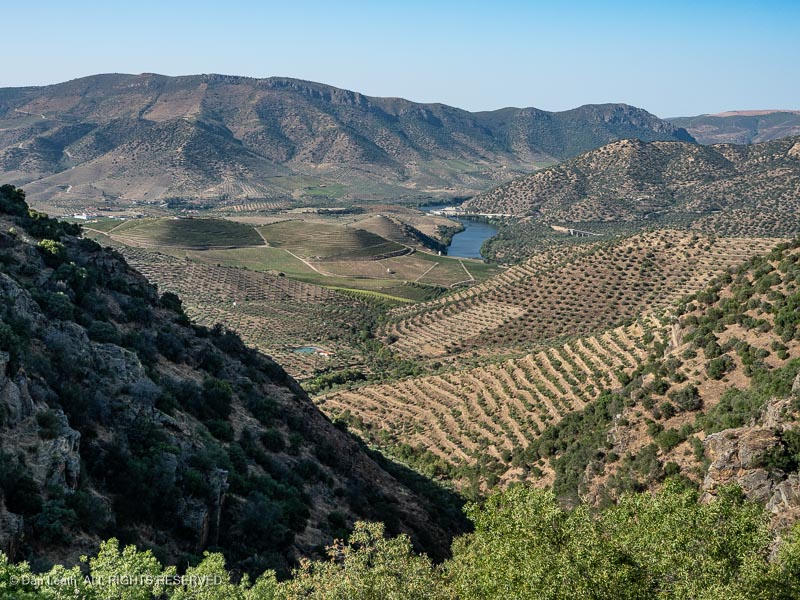
On the drive back down to the Douro, the bus stopped at Parque de Merendas where we could get out and enjoy the view looking down into the Douro River Valley.
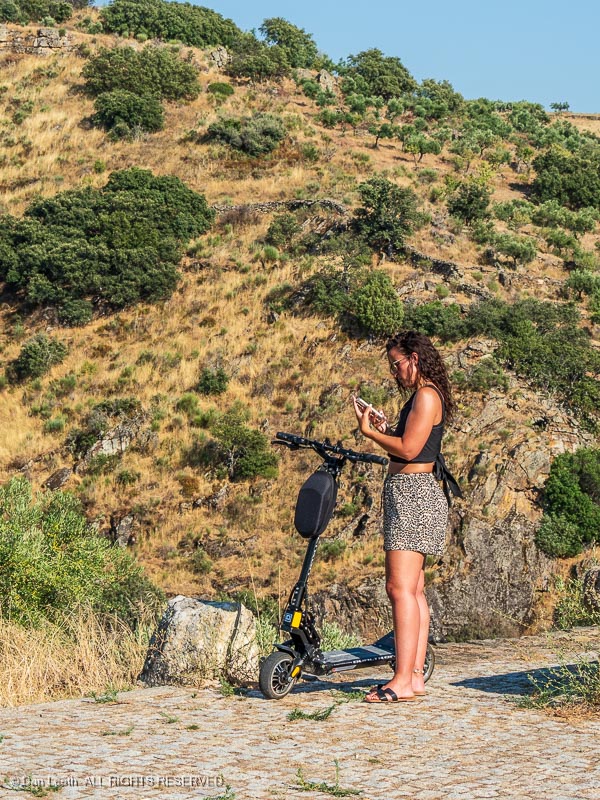
We shared the view with a young lady who arrived on a battery-powered scooter, which she rode up the twisting, mountain road.
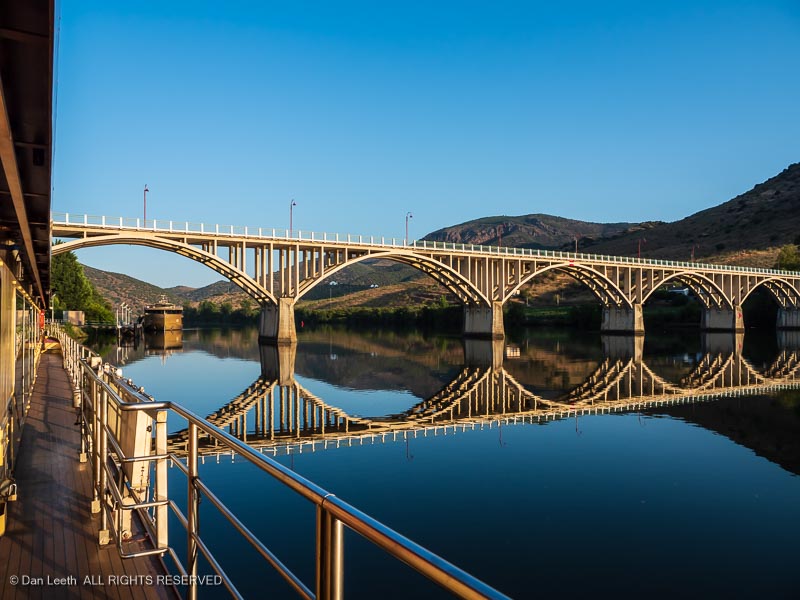
Later that afternoon, we rendezvoused with the boat at Barca d’Avla, the last river cruise port on the Douro before the border with Spain.
